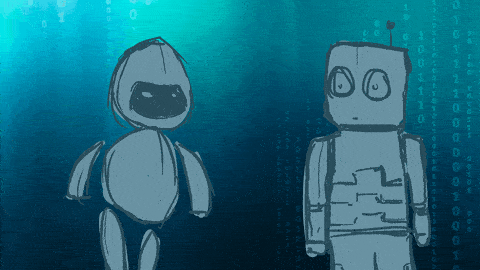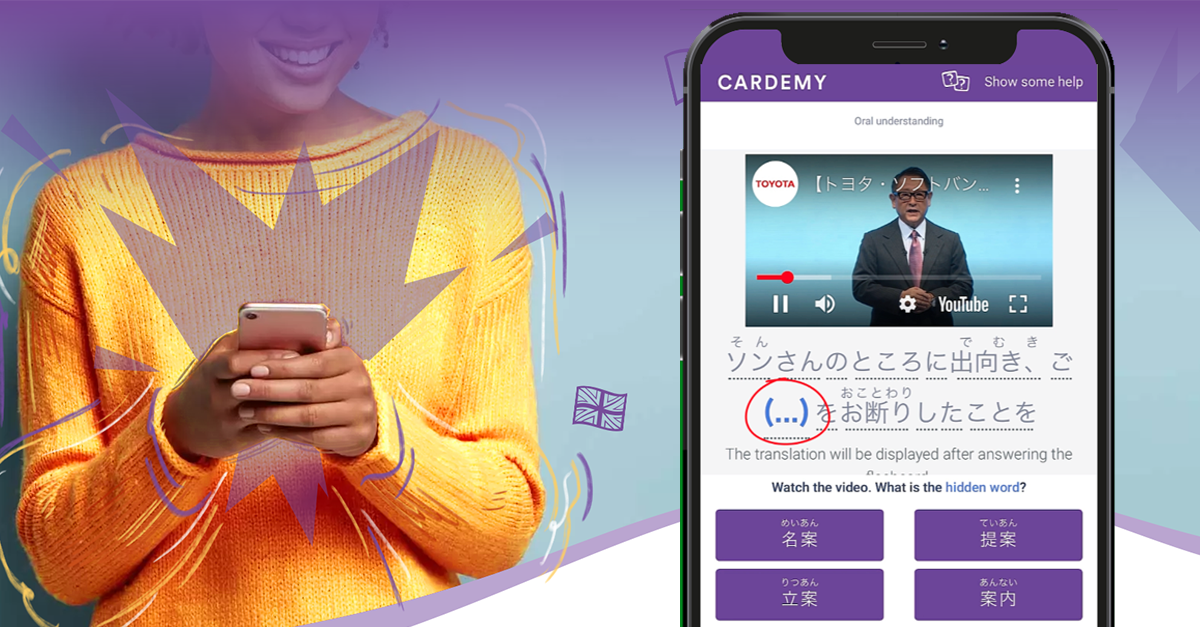Is AI just a buzzword?
Artificial intelligence (AI) is spreading faster and faster.
Before I started working on the development of AI for one of our projects at Cardemy, I imagined it like this:

And as a developer, I was picturing myself like this:

That being said, the reality was more like this:

Yes… developing an AI not very glamorous. That being said, working on AI with the CNRS for a few years allowed me to realize that it has a tremendous potential. Now I believe that it is not a buzzword and that it will change the world (hopefully not destroying it…!).
So, what is AI? AI stands for “Artificial Intelligence”. We also often use the word "Machine Learning". When using Machine learning, we don’t code the logic of the program directly. Instead, a “neural network” is coded (imagine an empty brain having the ability to learn) and we make it learn the task to accomplish by showing it a large quantity of correct and incorrect examples.
While the AI buzz is relatively recent, the technology itself has been used for a long time. For example, in spam email classifiers. Each time the user presses the “mark as junk” button, the neural network is fed with a new example and gets better at predicting the next one. Another example is Google Translate.
Mathieu Constant, Informatics Professor at University of Lorraine and Researcher at CNRS (ATILF) who has worked on this topic for many years comments: “High potential applications of AI are numerous such as confronting the natural language productions of the learners to the AI model, or providing relevant samples of natural language data to the learners, according to their needs.”
In this article, I would like to introduce you 3 high-potential applications of AI for language learning
Curriculum personalization
Research on language didactics showed that to remain motivated, it is better to present to learners contents that are not too easy and not too hard for them. The learner should be put outside of his/her comfort zone, while still feeling that the goal is achievable.
This is not easy to do because it means the learning experience must be customized to each learner individually, which represents a lot of work for teachers and schools.
The traditional way to achieve personalization is to create e-learning contents grouped by difficulty (for example, using a framework of reference such as CEFR) and with approximative topics/skills (for example, Business English B1). The problem is that the level of “personalization” of these courses is limited, as they are “one-fits-all” contents pre-created for learners with similar characteristics.
AI has a significant role to play here, as it can consider every single input of the user to optimize his/her learning path. For example, AI can allow to understand that learner A has already memorized words A, B and struggles with word C, so it will change its learning path accordingly.
We develop the Cardemy Fluent app that allows students to learn English, French and Japanese using ultra-personalized learning paths, which are controlled by the teachers.

Please don’t hesitate to reach our team if you would like to try Cardemy Fluent.
Pronunciation practice
Many people today have virtual friends named either Siri, Cortana or Alexa. These digital friends are living on your Smartphones and are powered by AI. They offer the ability to understand what humans say, analyze it and take actions like sending a SMS.
These amazing AI can do many other things such as transcribing voice to text or translating. Based on this ability, some of them are tweaked to help the learner to fill the gaps with the pronunciation of a native person.
We have selected 3 applications specialized in pronunciation analysis for language learning. While they definitely cannot replace teachers, they could probably help beginners to improve their accents.

Chatbots
AI can help with speech-generation too. These recent years, we can see more and more chatbots on online stores. They usually pop up offering you extra information about what you are about to buy, avoiding you to waste your time (or the one of the technical support’s team of the website…).
Chatbots dedicated for language learning exist. While they are still in an early stage, they can allow you to chat in a written form with them. It can be useful for beginners to practice simple interactions.
Anyway, if you are interested in this type of applications, please don’t hesitate to look at these two:

It is likely that in a near future, learners will be able to practice oral conversation with chatbots, at least in limited situations.
Conclusion
In this article we explained in simple terms what are the basic mechanisms of AI and shared a few examples of applications.
Generally, the first obvious benefit of AI is often that it can achieve repetitive tasks instead of humans, helping to save the precious time of teachers. I believe AI and technology should not replace teachers but empower them, allowing them to focus on more valuable tasks that can be done only by humans. Modern teachers should understand how to harness the power of AI and new technologies to provide awesome learning experiences to their students.
The sanitary crisis has accelerated the digitalization of educative tools. It is now a great timing to follow closely the last trends of e-learning and AI and try a few tools. Please don’t hesitate to follow us as this is a strong topic of interest for our team. We are always glad to chat with teachers and school directors about how we could build together the education technology of tomorrow.





Leave Comment